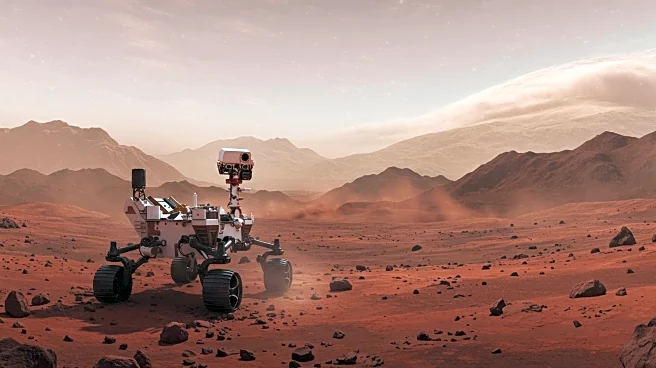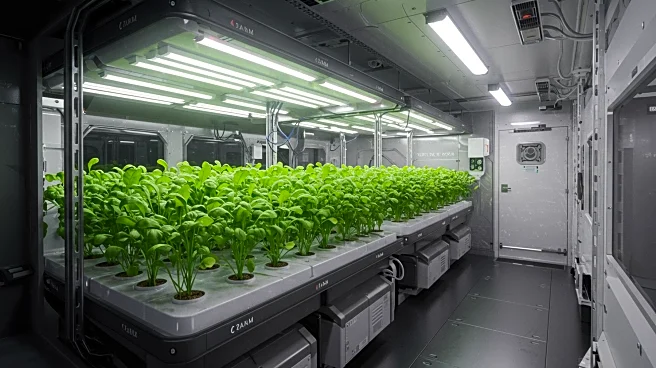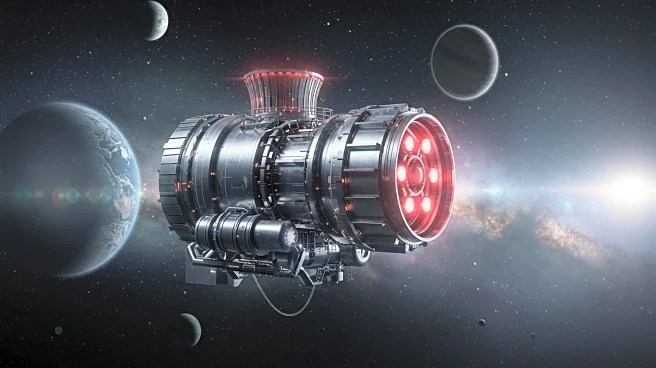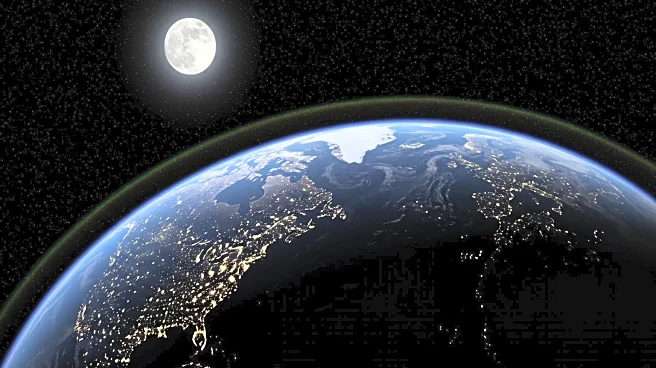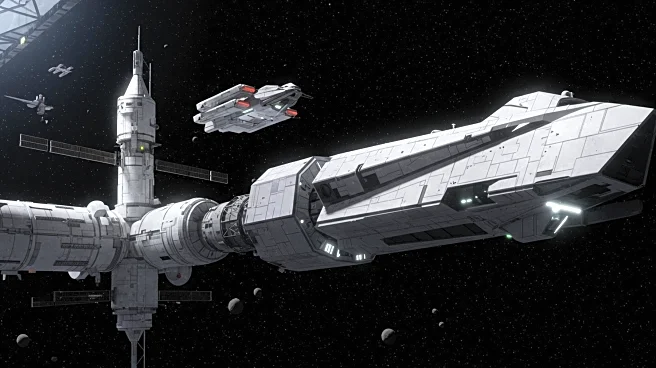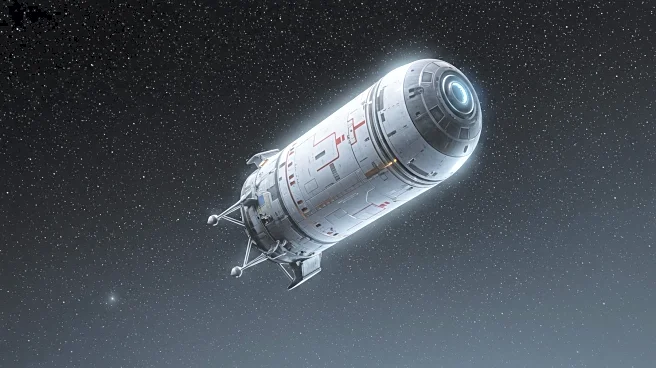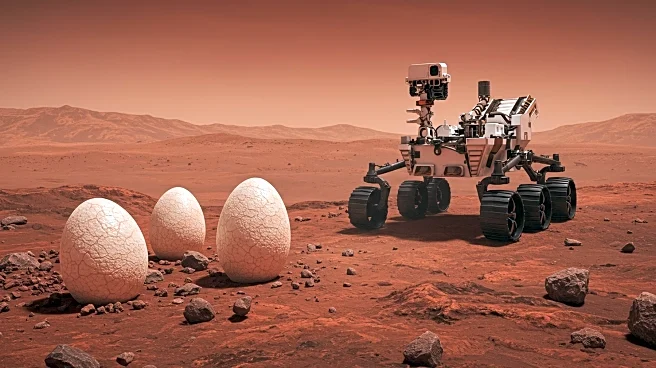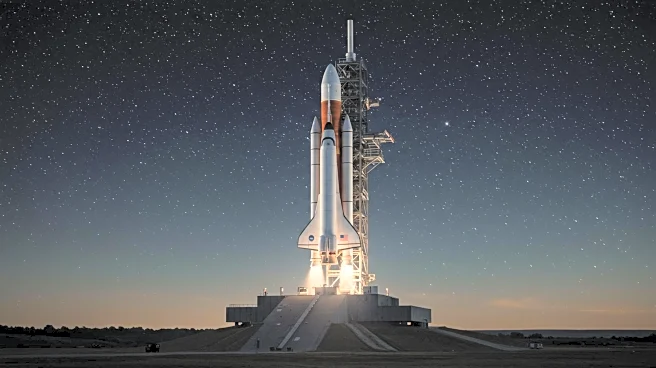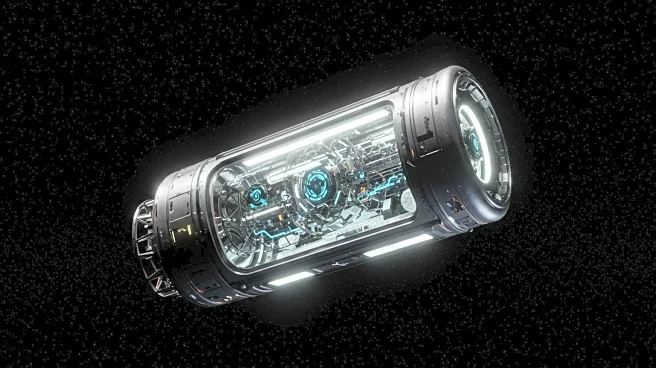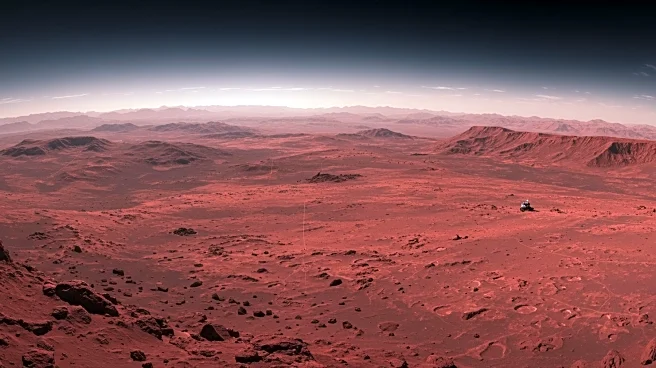What's Happening?
NASA's Mars rover Curiosity has successfully captured a 360-degree cylindrical projection panorama of the Martian surface using its Right Navigation Camera. The images were taken in Gale Crater on August 13, 2025, during Sol 4628 of the Mars Science Laboratory mission. The mosaic, composed of 31 images, provides a detailed view centered at 268 degrees azimuth. The images were captured between 1 PM and 2 PM local mean solar time, with each image having a 45-degree field of view. This achievement marks another milestone in Curiosity's ongoing exploration of Mars, contributing valuable data to the understanding of the planet's geology and environment.
Why It's Important?
The panoramic images captured by Curiosity offer significant insights into the Martian landscape, aiding scientists in their study of Mars' geological features and potential habitability. This data is crucial for future missions, including those aimed at human exploration. The detailed imagery helps researchers identify areas of interest for further study and potential landing sites for upcoming missions. Additionally, the success of Curiosity's imaging capabilities underscores the importance of robotic exploration in gathering information that would be challenging to obtain through human missions alone.
What's Next?
Curiosity will continue its mission, exploring Gale Crater and sending back data to Earth. The rover's findings will inform future Mars missions, including those under NASA's Artemis program, which aims to return humans to the Moon and eventually send astronauts to Mars. Scientists will analyze the new images to plan subsequent exploration activities and refine their understanding of Mars' surface conditions. The ongoing success of Curiosity's mission may also influence the design and objectives of future Mars rovers and landers.
Beyond the Headlines
The images captured by Curiosity not only serve scientific purposes but also inspire public interest in space exploration. They provide a tangible connection to Mars, fostering curiosity and support for NASA's missions. The technological advancements demonstrated by Curiosity's imaging capabilities highlight the progress in space exploration technology, paving the way for more sophisticated instruments in future missions.
